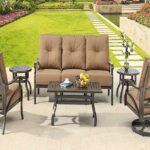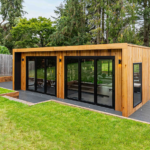Lighting is a critical element in bathroom design, impacting both the functionality and the aesthetics of the space. Whether you’re planning a bathroom remodel or making improvements to your current setup, the following tips will help you create a well-lit and visually appealing bathroom.
The Importance of Layered Lighting
When it comes to bathroom lighting, layering is essential. Layered lighting involves combining different types of light sources to create a balanced and versatile lighting scheme. This includes ambient, task, and accent lighting.
Ambient Lighting
Ambient lighting serves as the primary source of light in your bathroom, providing general illumination and setting the overall tone. Ceiling-mounted fixtures, such as flush mounts or recessed lights, are common choices. If your bathroom has high ceilings, consider a chandelier or pendant lights for an elegant touch.
Task Lighting
Task lighting is crucial for specific activities like shaving, applying makeup, or grooming. The best task lighting is usually found around the vanity. Wall-mounted sconces placed on either side of the mirror or an LED strip light above the mirror can minimize shadows and provide the clarity needed for detailed tasks.
Accent Lighting
Accent lighting adds drama and highlights architectural features or decorative elements. Use accent lighting to draw attention to a beautiful tile design, artwork, or a statement bathtub. Spotlights or LED strips under cabinets or behind mirrors can create a stunning visual effect.
Choosing the Right Fixtures
Selecting the appropriate fixtures is vital for both functionality and aesthetics. Here are some tips to help you make the right choices:
Vanity Lighting
The vanity area is one of the most critical spots in your bathroom. Opt for fixtures that offer ample light without casting shadows. Vertical fixtures or sconces mounted on either side of the mirror provide even illumination. For a modern touch, consider backlit mirrors that integrate lighting directly into the mirror itself.
Ceiling Fixtures
Ceiling fixtures should provide widespread illumination. Flush mounts and semi-flush mounts are great for low ceilings, while pendant lights or chandeliers can add luxury to bathrooms with higher ceilings. Ensure that the fixtures are rated for damp or wet locations to withstand the bathroom’s humidity.
Shower and Bathtub Lighting
Don’t overlook the shower and bathtub areas. Recessed lights with watertight trims are ideal for these zones. For a freestanding tub, a pendant light or chandelier above it can create a focal point and add a spa-like feel. Remember to choose fixtures designed for wet locations to ensure safety and longevity.
Integrating Lighting with Your Bathroom Design
A well-thought-out bathroom plan considers how lighting interacts with other interior design elements. Here are some practical tips to enhance your bathroom design with lighting:
Maximize Natural Light
Maximize natural light in your bathroom if possible. Large windows, skylights, or glass doors can flood the space with daylight, reducing the need for artificial lighting during the day. Natural light also enhances the colors and textures of your bathroom materials, making them appear more vibrant.
Use Dimmers
Installing dimmer switches allows you to control the lighting intensity. This flexibility lets you adjust the ambiance based on your mood and activities. Dimmers are especially useful for creating a relaxing atmosphere during a bath or providing gentle illumination during nighttime visits.
Consider Color Temperature
The color temperature of your light bulbs affects the overall feel of your bathroom. Warm white (2700K-3000K) creates a cozy and inviting ambiance, while cool white (3500K-4100K) offers a crisp and energizing effect. Choose the color temperature that best complements your bathroom’s color scheme and desired mood.
Practical Tips for Your Bathroom Lighting
Plan Your Lighting Early
Incorporate lighting into your bathroom plan from the start. This ensures that electrical work can be done efficiently and that fixtures are appropriately placed for optimal illumination.
Highlight Key Features
Use accent lighting to highlight key features in your bathroom. This could be a beautiful vanity, an intricate tile design, or a freestanding tub. Effective accent lighting can transform these elements into focal points.
Ensure Proper Placement
Proper placement of light fixtures is crucial for functionality and aesthetics. Task lighting should be at eye level to minimize shadows, while ambient lighting should be evenly distributed to avoid dark spots.
Final Thoughts
Effective bathroom lighting combines functionality and aesthetics to create a space that is both practical and beautiful. By understanding the importance of layered lighting, choosing the right fixtures, and integrating lighting with your overall bathroom design, you can transform your bathroom into a well-lit oasis. With these tips in mind, your bathroom will not only meet your daily needs but also become a stylish retreat.
Ready to light up your bathroom? Start planning your bathroom lighting design today and see the difference it makes!






Leave a Reply
You must be logged in to post a comment.